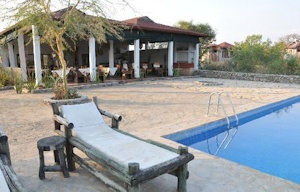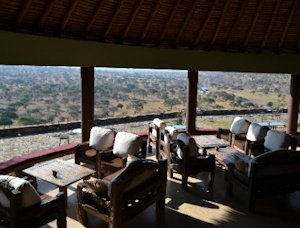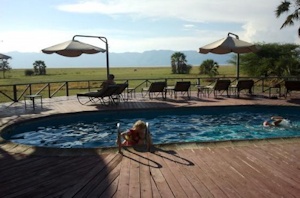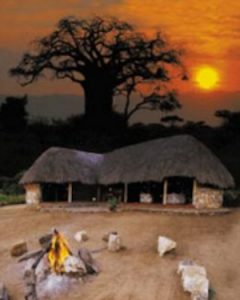Roika Tarangire Tented Lodge is situated only a couple of minutes drive from the entrance gate into Tarangire National Park. This lodge is run and operated by Tanzanians and also takes part in a number of development projects of the nearby local communities for example building schools installation of solar panels in the adjacent Masai village. The lodge is a permanent mid-specification facility offering pastoral, clean as well as outstandingly comfortable rooms and has large communal areas with some extravagant, lovely features that really excite all the people of Tanzania.
This lodge has twenty one tents pitched on wooden platforms and covered by makuti roofs. Every tent has a wide open veranda with two chairs plus a small table, inside bathroom with a shower and an independent bath-tub. Here Electricity is provided by solar panels and they also offer charging facilities for video devices, phones, cameras and other chargeable devices in the restaurant and bar. There is a conference hall, swimming pool, Internet service available and TV center.
Other additional activities here include short walking safaris around the camp as well as cultural visits to the close by Massai village.
We normally reserve this lodge when others accommodation facilities in this same price range are completely booked.
Tarangire National Park
Tarangire National Park is found south of the wide grass-plains of Maasai lands, and it covers an area approximated to 2,600 sq km (1,600 sq miles). it is just 75 miles south west of the tourist capital of Arusha. The park can be best explored while taking a safari in the game parks along Tanzania’s northern Safari Circuit.
It rewards visitors with breathtaking spectacular views of the extensive savannah grasslands dotted with acacia woodlands plus huge Baobab trees. The overwhelming number of wild animals within Tarangire is only second to that inside the internationally renowned Ngorongoro Crater.
This park offers wonderful game views all year round however, its different seasons will certainly reward you very different experiences. There is the dry season which is normally dusty and characterized by numerous wild animals that congest around the river banks whose levels of water are then greatly decreasing, and then the productive green season that is characterized by the calving of most wild animals and even birds. However, we suggest that you visit during the dry months and avoid the wet season especially when the park is receiving heavy rainfall in the months of May and April.
During the dry months, Tarangire is a safe haven for most of the migratory animals such elephants, gazelles, buffaloes, zebras, wildebeests and elands. These usually spend a number of months just outside the park boundaries in the wildlife corridors which joins Tarangire with the nearby protected habitats.
Dry Season commences from June to the finish of September, and then from January up to February and actually this is the best period to watch wild animals. The Wet Season includes the short rains which begin in November up to December and then the long rains from March to May








